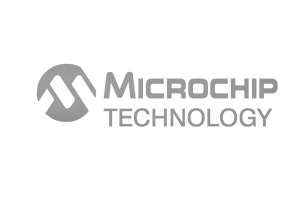ATMEGA256RFR2-ZF Overview
The ATMEGA256RFR2-ZF is a highly integrated microcontroller with embedded radio frequency (RF) transceiver functionality, designed specifically for low-power wireless applications. Featuring a 256KB flash memory and an 8-bit AVR CPU core, it combines robust processing capabilities with seamless RF communication in the 2.4 GHz ISM band. This device supports advanced protocols, enabling reliable wireless data transmission with minimal external components. Its low power consumption and versatile peripheral set make it ideal for embedded systems in industrial automation, smart metering, and IoT solutions. For comprehensive product details, visit Produttore di circuiti integrati.
ATMEGA256RFR2-ZF Technical Specifications
| Parametro | Specifiche |
|---|---|
| CPU Core | 8-bit AVR RISC |
| Memoria flash | 256 KB |
| SRAM | 32 KB |
| Frequenza operativa | Up to 16 MHz |
| RF Transceiver Frequency | 2.4 GHz ISM Band |
| Modulazione | O-QPSK (Offset Quadrature Phase Shift Keying) |
| Tensione di alimentazione | 1.8 V ?C 3.6 V |
| Consumo di energia | Low power modes down to microamp range |
| Tipo di confezione | 64-pin QFN |
| Intervallo di temperatura operativa | Da -40 a +85 °C |
ATMEGA256RFR2-ZF Key Features
- Integrated 2.4 GHz RF transceiver: Enables wireless communication without the need for external RF modules, simplifying design and reducing system cost.
- 256 KB Flash with 32 KB SRAM: Provides ample memory for complex embedded applications and protocol stacks, enhancing software flexibility.
- Basso consumo energetico: Supports multiple sleep modes to extend battery life in portable and remote sensor deployments.
- Robust AVR CPU core: Delivers efficient processing with a 16 MHz clock, optimizing real-time control and data handling.
- Advanced modulation support: O-QPSK modulation ensures reliable data transmission in noisy industrial environments.
- Comprehensive peripheral set: Includes timers, ADCs, UART, SPI, and I2C interfaces for versatile system integration.
- Wide operating voltage and temperature range: Suitable for harsh industrial conditions and varied power supply scenarios.
ATMEGA256RFR2-ZF Advantages vs Typical Alternatives
This microcontroller offers a unique combination of integrated RF capability and robust processing power, reducing the need for additional wireless components. Compared to typical alternatives, it delivers enhanced sensitivity and reliable data throughput with lower power consumption. Its compact package and extensive peripheral set also improve system integration and reliability, making it ideal for complex embedded wireless applications.
🔥 Prodotti più venduti

IC caricabatterie lineare BQ24075 di Texas Instruments - Pacchetto QFN da 5 x 4 mm

Modulo sensore di corrente INA219 di Texas Instruments - Pacchetto SOIC, monitoraggio di precisione

Riferimento di tensione di precisione LM4041 di Texas Instruments - Pacchetto SOT-23

Amplificatore operazionale audio OPA2134 di Texas Instruments - Doppio, ad alte prestazioni, pacchetto SOIC-8
Applicazioni tipiche
- Wireless sensor networks for industrial automation, providing reliable real-time communication with low latency and power consumption in factory environments.
- Smart metering devices requiring secure, low-power wireless connectivity for data transmission over the 2.4 GHz band.
- Home and building automation systems leveraging integrated RF to control lighting, HVAC, and security remotely.
- IoT endpoint devices demanding efficient processing and wireless communication in compact form factors.
ATMEGA256RFR2-ZF Brand Info
The ATMEGA256RFR2-ZF is a product from the renowned AVR microcontroller family, known for its ease of use and efficient architecture. Designed with integrated RF functionality, it extends the capabilities of traditional microcontrollers by combining wireless communication and processing on a single chip. This integration supports developers in creating compact, cost-effective solutions for wireless embedded systems. The device benefits from extensive development tools and community support, facilitating rapid prototyping and deployment.
FAQ
What is the primary operating frequency of the embedded RF transceiver?
The device operates its RF transceiver in the 2.4 GHz ISM band, which is widely used for wireless communication protocols like ZigBee, Thread, and proprietary 2.4 GHz systems. This frequency provides a good balance between range and data throughput for typical industrial and consumer applications.
🌟 Prodotti in evidenza

"Acquista il comparatore di tensione di precisione MAX9312ECJ+ in contenitore DIP per prestazioni affidabili".

QCC-711-1-MQFN48C-TR-03-1 Bluetooth Audio SoC with MQFN48C Package

Modello 0339-671-TLM-E - Pacchetto TLM-E ad alte prestazioni per funzionalità avanzate

1-1415898-4 Alloggiamento connettore, filo elettrico-scheda, presa, confezionato
How much memory is available for application development?
It features 256 KB of on-chip flash memory for program storage and 32 KB of SRAM for data handling. This memory configuration supports complex firmware and protocol stacks without the need for external memory, enabling efficient embedded system design.
What are the power consumption characteristics in low-power modes?
The microcontroller supports multiple sleep and power-saving modes, allowing power consumption to drop into the microamp range. This makes it highly suitable for battery-powered wireless sensor nodes and other energy-sensitive applications.
📩 Contattaci
Which peripherals are integrated to support system connectivity?
It includes a comprehensive set of peripherals such as timers, 10-bit ADC, UART, SPI, and I2C interfaces. These enable versatile system connectivity options for sensors, actuators, and other communication modules within an embedded design.
What package options are available for this device?
The device comes in a compact 64-pin QFN package, which supports high-density PCB layouts and efficient thermal performance. This package size is ideal for space-constrained wireless embedded applications requiring robust RF performance.





